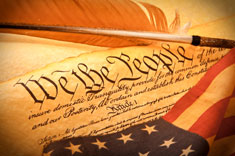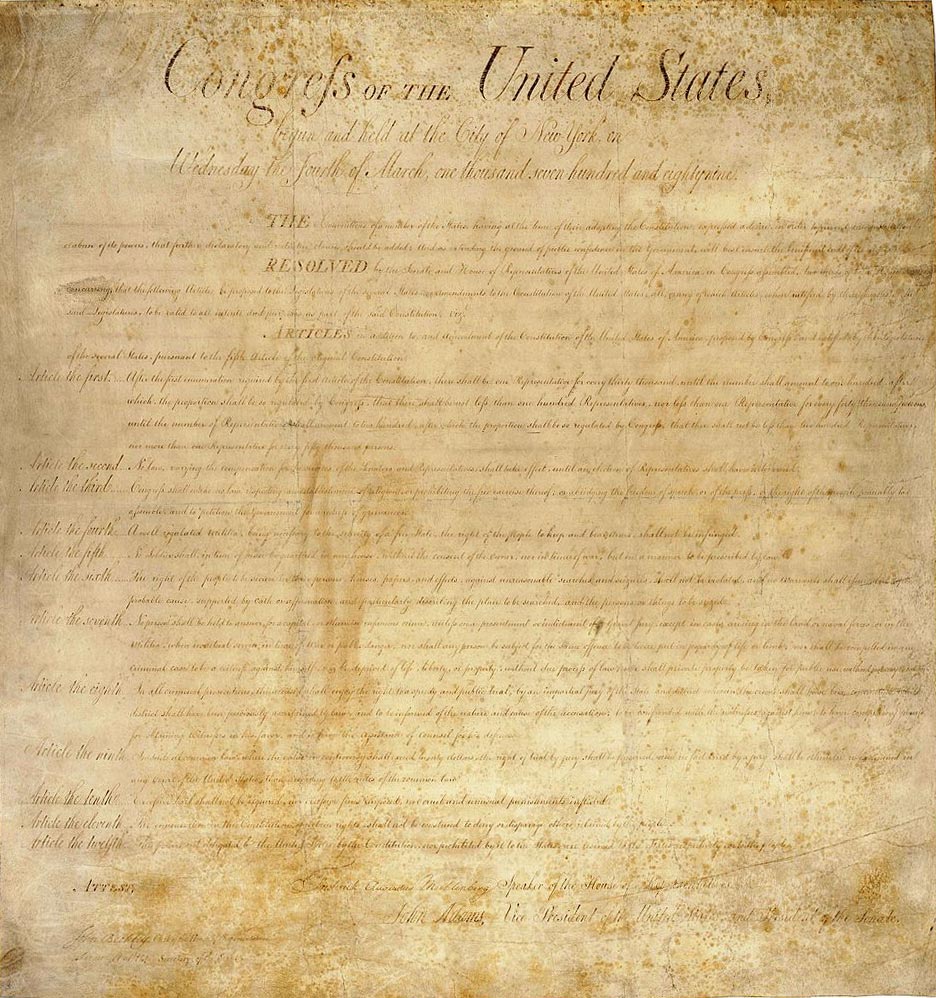| United States Constitution | |
|---|---|
 |
|
| The U.S. Constitution | |
| Preamble | |
| Articles of the Constitution | |
| I ‣ II ‣ III ‣ IV ‣ V ‣ VI ‣ VII | |
| Amendments to the Constitution | |
| Bill of Rights | |
| I ‣ II ‣ III ‣ IV ‣ V ‣ VI ‣ VII ‣ VIII ‣ IX ‣ X | |
| Additional Amendments | |
| XI ‣ XII ‣ XIII ‣ XIV ‣ XV ‣ XVI ‣ XVII ‣ XVIII ‣ XIX ‣ XX ‣ XXI ‣ XXII ‣ XXIII ‣ XXIV ‣ XXV ‣ XXVI ‣ XXVII | |
| View the Full Text | |
| Original Constitution | |
| Bill of Rights | |
| Additional Amendments |
The 2nd Amendment to the Constitution of the United States has perhaps generated more emotion and controversy over the years than any other Amendment because it involves the issue of guns. The 2nd Amendment guarantees the right of every American citizen to own a gun.
The United States is plagued with frequent crimes committed with guns, including periodic mass shootings resulting in too many deaths.
The majority of other developed nations in the world maintain extremely restrictive policies on gun ownership. Most developed nations do not allow individual ownership of guns, although there are exceptions, such as Switzerland, which actually requires each of its citizens to own a gun.
Text
A well regulated militia being necessary to the security of a free state, the right of the people to keep and bear arms shall not be infringed.
Intent of the Founders
 The Founding Fathers in writing the 2nd Amendment included the right to bear firearms, but tagged it to the concept that a nation of free people is required to maintain a “well-armed militia.” This has long been a point of controversy because of how this stipulation is interpreted. Some have argued that the average citizen on the street today is not a member of a militia, and thus, the 2nd Amendment does not apply here. In short, this leaves a loophole for regulating the ownership of guns among the general population.
The Founding Fathers in writing the 2nd Amendment included the right to bear firearms, but tagged it to the concept that a nation of free people is required to maintain a “well-armed militia.” This has long been a point of controversy because of how this stipulation is interpreted. Some have argued that the average citizen on the street today is not a member of a militia, and thus, the 2nd Amendment does not apply here. In short, this leaves a loophole for regulating the ownership of guns among the general population.
The militia issue has been taken up by the Supreme Court as recently as year 2010, however, when the court ruled that the right to own a gun “is not connected to serving in a militia.” This means that any citizen can own some kind of firearm as long as they use it lawfully and for self-protection.
Defining Limit and Definitions
But what is the limit on the kind of firearm that a person can own? How big, powerful and advanced can a weapon be before it leaves the realm of protection under the 2nd Amendment? This issue has been debated rigorously in recent years over high-caliber assault rifles. In 1994, for example, the sale and ownership of an assault rifle was banned, but this restriction expired in 2004. Many lawmakers have strived to bring back the assault rifle ban, but there is little political will in Washington to take up the issue.
But if an assault rifle can be considered a legal firearm, what about even more advanced weapons – such as a shoulder-launched rocket missiles? Weapons such as these – and other armaments, such as hand grenades and fully-automatic machine guns – do not enjoy the protection of the 2nd Amendment. The point is, however, that determining just where the line is between “protective” weapons and those that should be prohibited is not always easy to determine.
Historic Challenges
The 2nd Amendment has experienced some severe tests over the years. One of them was a horrifying event in 1875 when a group of white men used guns to murder more than 60 African-American men in Colfax, Louisiana. This was used as the basis of an attempt to restrict gun ownership. The argument was that the 14th Amendment, which prohibits depriving citizens of “life, liberty and property” should supersede the 2nd Amendment. But the Supreme Court ruled in the United States vs. Cruikshank that the Colfax incident did not apply to the issue of the right to bear arms.
Another tough test for the 2nd Amendment occurred in 1886 when a German-American group formed an armed paramilitary organization. This group, headed by Herman Presser, demanded the right to not only form what was essentially a private army, but to march in public parades in Chicago with its members bearing loaded rifles and other weapons. Officials with the state of Illinois were alarmed by the group and acted to shut them down. Here again, however, the Supreme Court ruled in Presser vs. Illinois that the paramilitary group was within their rights to organize a militia and parade in public streets with their weapons.
In general, the 2nd Amendment and its guarantee for citizens to own and bear firearms, including carrying loaded weapons in public, has survived many attempts to restrict them in some way, both on a federal and state level.
Restrictions
However, that does not mean that there are no laws restricting guns – in fact, the leading firearm advocate group, the National Rifle Association, or NRA, claims that there are currently more than 2,000 laws which restrict gun use in some way. One example might be that those people with criminal records or who have been convicted of a federal offense do not have the right to bear arms. Another is the Brady Handgun Violence Prevention Act, which requires mandatory federal background checks for people seeking to purchase firearms.
Even so, American society is probably the least restrictive in the world on the issue of gun ownership, thanks to the 2nd Amendment.